"The Finest Large Scale Housing in America"?
I was at the BU Bookstore the other day and I picked up a bargain book called The Sourcebook of American Architecture by G. E. Kidder Smith. It was put out by the Princeton Architectural Press in the late 90's. It's actually a pretty good guide to American architecture. It's got 500 buildings total, 250 pre-1900 and 250 after, but you can tell that it was published in the period when a kind of brute modernism was still very fashionable, at least at an intellectual level (I'm not sure it was ever really successful on a popular level). Anyway, I was paging through when much to my surprise, I found that Cedars-Riverside was rated one of the 500 most important buildings in the history of American Architecture. In fact, the book calls them "the finest large scale housing in America." hmmm. 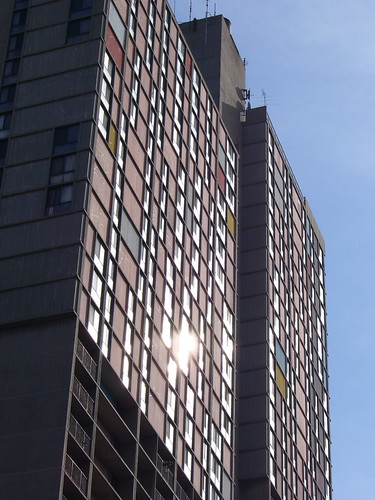
From a visual standpoint, I've always liked the towers, (they were designed by the same architect who designed the original Guthrie Theatre by the way) but I think you'd be hard pressed to call them the finest large scale housing in America. Marina Towers in Chicago and Stuyvesant Town in Lower Manhattan come to mind for me. But that issue aside, I feel like there are a couple of interesting things that we can gather from that statement. First, the people who judge architectural value seem to care little how people actually use the building. Second, the people who use (look at/drive past/ignore) the building seem to care little about how much architectural value the building has. I think both of those are bad. 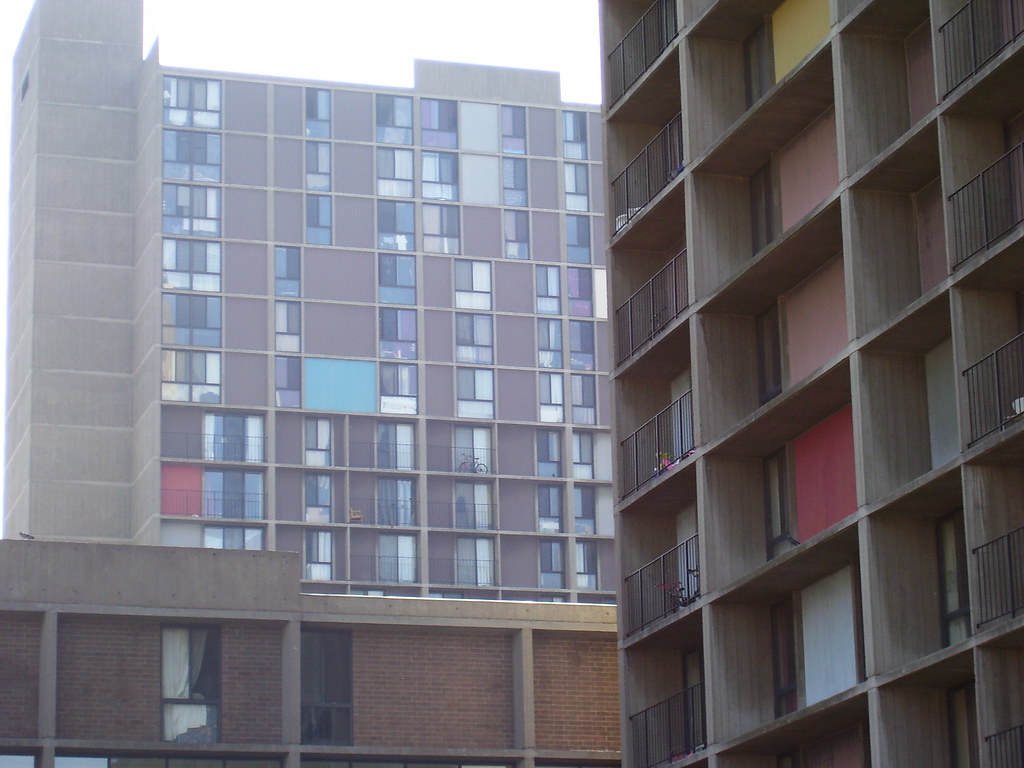
First, to the architectural critics: Yes, the buildings are really quite beautiful for concrete. Yes, the way the buildings are arranged to give everyone a good view without having their privacy invaded is ingenious. However, one quick walk around the ground level shows where the architect/planners failed. It's desolate. I spent 3 hours there one morning and say exactly one person: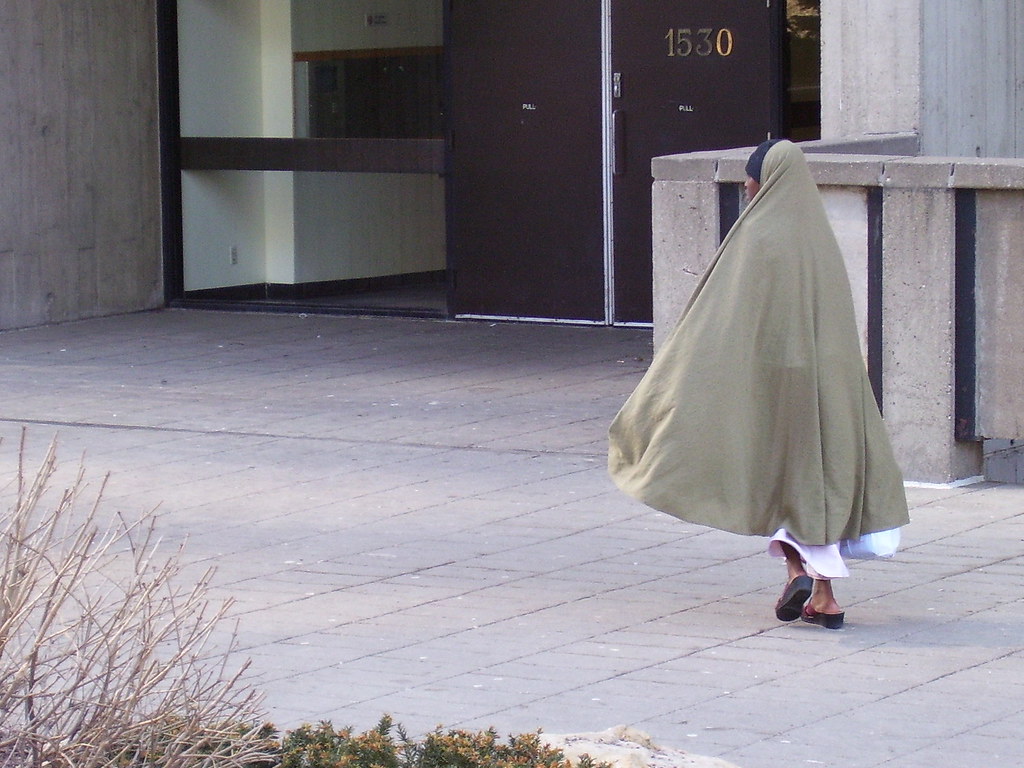
but besides that, the grounds are a confusing mass of concrete stairwells and the buildings feel oppressive. 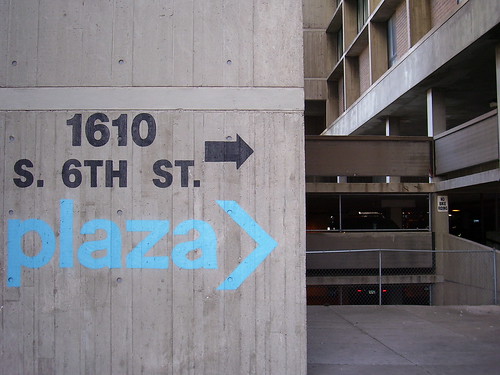
If the buildings were somewhere where people just needed to get from their apartments to the underground parking garage, maybe that wouldn't matter, but in the city, it only serves to sever the tenants from the surrounding community and the surrounding community from the tenants.
To the people (and I mean the city more than the tenants here): Recognize that good architecture contributes to the city, especially if the architect works to incorporate the architecture into the fabric of the city. And just because something isn't appreciated right now doesn't mean it won't be in the future. Someone in Chicago realized that an abandoned building on the South Side was designed by Eero Saarinen. Now it's million dollar condos.
Do I think that Cedars-Riverside will gentrify someday? Honestly, yes. With all the rush to build new tall/pacific-northwesty condos, it's only a matter of time before someone realizes the architectural value of Minneapolis' "classic high-rises" (I'm copy-writing that right now). And with a little renovation to the ground level, some more streets cutting through and some mixed-use shopping, maybe they will not only be the finest large scale housing in America, but also the finest large scale homes in America. 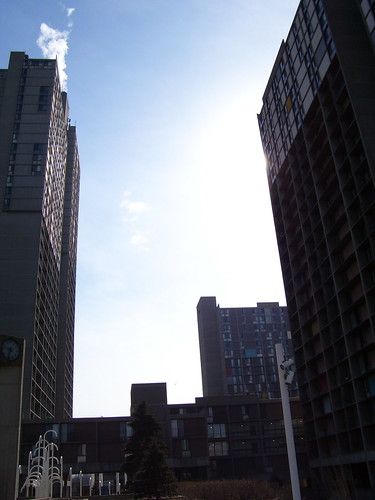
On a completely different note: We saw Little Miss Sunshine. As must all of you. Amen.



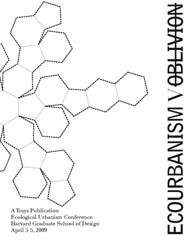
4 comments:
still 3 people out of the 4000 who live in those buildings is hardly great. Look at it this way: there are 8000 people living in that neighborhood total, half in cedars-riverside and half mostly concentrated around seven corners. Do you think it's possible at any time of day or night to spend 3 hours at Seven corners and only see one person?
my point is that there is certainly less streetlife within cedars-riverside than in the surrounding community.
btw. you said you read a book on louis riel awhile ago. Good? not good? title?
but what is the density of any given strip of franklin and what is the density at cedars-riverside? On franklin, there obviously aren't 4000 people on any given 4 blocks. People are drawn to franklin from surrounding streets. No one is drawn to cedars-riverside, and even the people who are there aren't spending time outside in the development in any real way. 4000 people is enough to support their own elementary school, or the rough equivalient of about 30 square minneapolis blocks. When you start thinking about that many people, you start to wonder where they are.
Also, from your discriptions it sounds like you are actually skirting around the outside of the development on the streets that have retained the grid, rather than in the superblock. Go through the middle sometime and take a look. There's a central courtyard with some funky statues.
Great post.
I guess to an architect (especially an American architect) I wouldn't be surprised if it's in the top 500 ...
... to the other 98% of the population, I dunno. That's a tough call.
The think I like about Riverside is that it reallys date a different period in community development work. There are numerous lessons to be taken from the project.
One one level, I believe it entirely succeeds at its main purpose - to house a large number of poeple.
A common misconception is that it's public housing (which it's not) - but it does house a large number of lower income folks. I believe it has around 700 or so units (I can probably find the exact number, if anyone's interested). That's a great asset in any community - particularly in an area with high housing prices. Good architecture or not, you don't want to overlook the fact that people need to live somewhere, and many live here.
On the other hand, I think you pointed to a lot of shortcomings of the project, in terms of community development.
Brutal could easily describe the impact of the project on the individual at the human / plaza level. Concepts like defensible space and safety through design were clearly not in vogue at the time. There are numerous "danger" spots, dead ends, etc.
And quite frankly, much of the art / sculpture / lighting is sort of scary. Not in a bad way, just in the way that might give little kids nightmares.
example here
I think you're entirely right, the project is mostly unappreciated by local folk.
I think it's a cool example of unique design. I dig the all the concrete and akward angles, but it is hardly in scale with the rest of the neighborhood (I remember reading the plan was to build 7 or so type of complexes around Minneapolis).
One thing that I've never quite understood is the University's relationship to the project (if there is any). You've got the state's premier land grant university next to one of the state's largest housing highrises (with a large immigrant population).
Should there be a stronger connection between the two?
Post a Comment